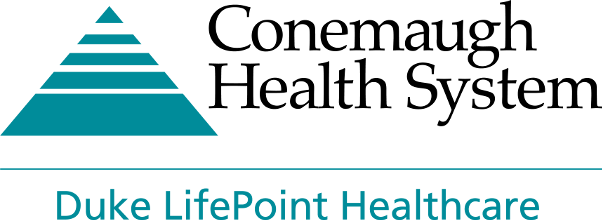Pulmonary Care
Conemaugh Health System assesses, diagnoses, and treats various diseases and conditions related to the lungs.
Conemaugh Physician Group - Pulmonary
1111 Franklin Street, Suite 180
Johnstown, PA 15905
Phone: (814) 534-3740
Fax: (814) 534-3780
Black Lung Screening
Conemaugh Miners Medical Center
290 Haida Avenue
Hastings, PA 16646
Phone: (814) 247-3100
Next Steps
Common Conditions
- Asthma
- Black lung
- Bronchiectasis
- Chronic cough
- Chronic Obstructive Pulmonary Disease (COPD) - Click here for Patient Health Guide
- Cystic fibrosis
- Dyspnea
- Emphysema
- Hemoptysis
- Interstitial lung disease (ILD)
- Pleural effusions
- Pneumonia (bacterial, viral and fungal)
- Pulmonary fibrosis
- Pulmonary hypertension
- Pulmonary nodules/masses
- Reactive airway disease/occupational asthma
- Restrictive airway disease
- Sarcoidosis
- Shortness of breath
- Vocal cord dysfunction
Services
- Asbestosis testing
- Black lung testing
- Body plethysmography
- Diffusion capacity studies
- Arterial blood gases
- Methacholine challenge
- Pulmonary stress studies
- Bronchoscopies
- Navigational bronchoscopies
- Maximum expiratory pressure
- Disability testing
- Spirometry
- Pulse oximetry
- Home O2 evaluations
- EIA studies
- 6 minute walks
- Negative inspiratory force
- Lung volume
Pulmonary Function Lab
Conemaugh Health System's pulmonary function lab provides comprehensive testing and evaluation, and individualized education and treatment recommendations. Pulmonary function technologists, who are registered and certified in respiratory therapy and pulmonary function, work with referring physicians to provide a continuum of care for patients.
Reasons for pulmonary function testing
There are many reasons for pulmonary function testing, but the most common include the analysis of patients experiencing symptoms and signs of lung disease, coughing, shortness of breath, low oxygen levels, wheezing, or recurrent bronchitis. Testing is also useful to monitor the effectiveness of therapy, the progression of a disease, to establish a baseline fitness level for patients, or to screen patients at risk for pulmonary disease.
Preparing for a pulmonary function test
Pulmonary function tests measure lung capacity to take in and release air, and how much oxygen is in the blood. Depending on the test performed, testing is typically 35 minutes to two hours in length. Patients should not drink caffeinated beverages (coffee, tea, cocoa) or eat a heavy meal for at least 12 hours prior to testing. Current smokers should not smoke for at least 12 hours before the test. Specific instructions are given to each patient regarding medications and use of a bronchodilator or inhaler prior to testing. Patients are encouraged to dress comfortably for the test as some exercises and movement may be necessary.
Education program
During the testing process patients are provided with education and training on pulmonary topics relevant to his / her condition. Education and training includes use of inhalers, medications, breathing exercises, and smoking cessation. Conemaugh's pulmonary function team also takes part in screenings and educational events upon request.
Types of Pulmonary Function Tests
- Spirometry: breathing test that evaluates lung function by measuring airflow into and out of the lungs
- Spirometry Pre/Post Bronchodilator: determines a patient’s response to specific bronchodilator therapy indicated with chronic cough or chest tightness, suspect asthma, or Chronic Obstructive Pulmonary Disease (COPD).
- Arterial Blood Gases: blood test that measures the levels of oxygen and carbon dioxide levels in the blood. This test evaluates the ability of the lungs to move oxygen in and carbon dioxide out of the blood.
- Lung Volumes: lung volumes measure different parts of the breath to determine how much air a patient can breathe in and out. Lung volumes are found through Plethysmography, where a patient sits in an enclosed clear chamber and is asked to perform a series of very small panting breaths. Lung volumes are used to determine the presence of restrictive or obstructive lung disease.
- Oximetry with Exercise: non-invasive test to determine the amount of oxygen in the blood by comparing resting pulse oximetry levels to those of increased activity levels.
- Diffusion: measures how well gases such as oxygen and carbon dioxide move from the lungs to the blood and back to the lungs.
- Methacholine Challenge: test performed to determine the presence of asthma. Patients are asked to inhale different dosages of Methacholine, a bronchoconstrictor, and repeat spirometry testing after each dose. Patients are monitored closely and given medication to reverse any symptoms that may occur.
- Flow-Volume Loop: common practice of charting expiratory (breathing out) flow rates against lung volumes; the link between flow rates to lung volume produces a typical flow-volume curve. The flow-volume loop is helpful in evaluating patients with cough and shortness of breath.
- Maximal Respiratory Pressures: measures the force of air coming from the lungs with a device in the mouth. Assesses and quantifies the degree of respiratory muscular weakness that may occur with neuromuscular diseases.
- Cardio-Pulmonary Stress Test: measures heart, lungs, and muscle response to exercise. It provides important information about what may limit your ability to exercise.
